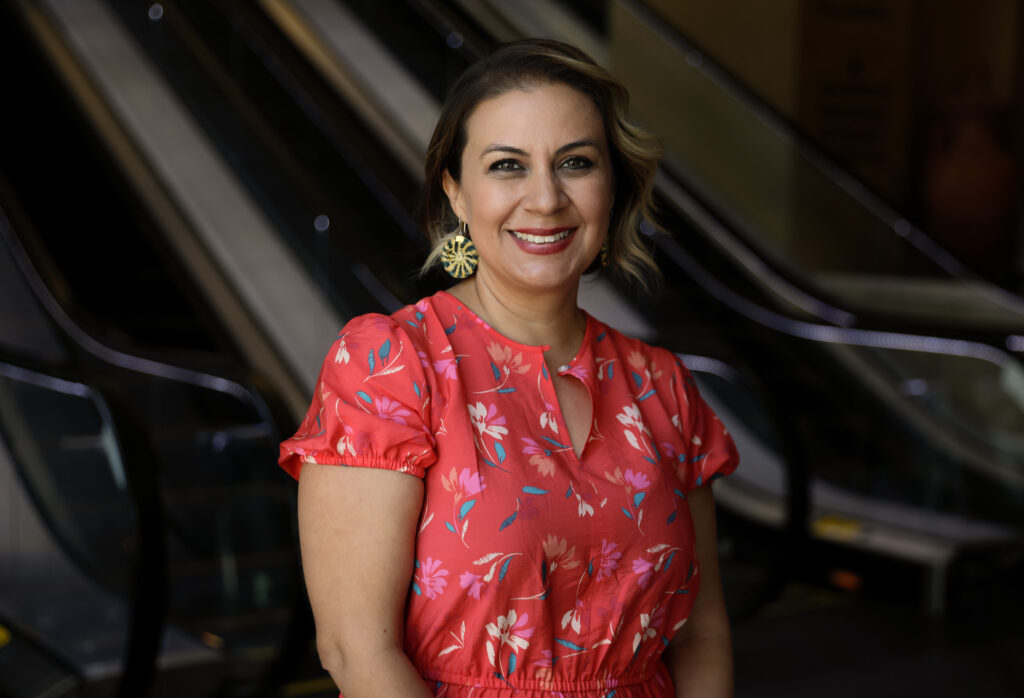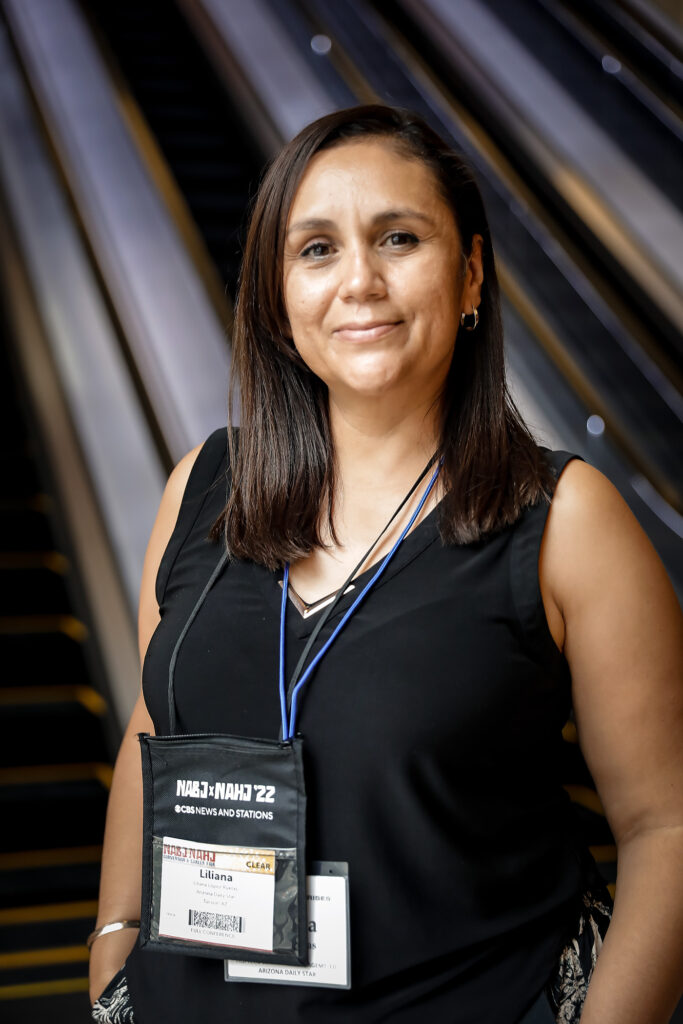COVID-19 misinformation in Latino communities exposed gaps in traditional media. Community news groups filled the void.

When the first video popped into my mother’s phone showing a woman placing a spoon on her arm and how it supposedly stuck to her skin as a result of the COVID-19 vaccine, I could already imagine what the messages following it would be.
My Mexican mom’s Esposas Cristianas, Christian wives, group on WhatsApp could not believe what they were seeing. Right then and there, they decided the vaccine would do unexplainable harm to their bodies and they would rather take their chances than get vaccinated.
Immediately, my fully vaccinated mother had me run and get a spoon to send a video of her own to her friends and prove them wrong. But despite the new evidence, many of them remained unconvinced.
Misinformation has always thrived on the internet. However, the pandemic exacerbated information voids, especially within the Latino community, and exposed shortcomings in traditional media outlets, experts and journalists said.
NBC News reported that Latinx people are 57% more likely to use social media as their primary source of information surrounding COVID-19 than other groups, with WhatsApp and Facebook being popular choices among young adults in the demographic.
Researchers from First Draft, a former nonprofit, monitored online activity from unverified Facebook pages and groups from Nov. 9, 2020, to Sept. 9, 2021 as well as Spanish-language discourse on social media and closed messaging platforms such as WhatsApp and Telegram. They found that narratives debating the safety of COVID-19 vaccines and alleged “alternative treatments,” were common. Religious figures with large audiences amplified COVID-19 misinformation on vaccines and treatments for the disease, researchers said, causing a number of people in Latin American countries to die from trying “miracle” treatments popular pastors promoted such as ingesting Chlorine Dioxide.
“Mijita when it gets hot in Arizona, coronavirus is going to die because viruses die in the heat,” was just one of the things founder of Conecta Arizona, Maritza Félix, heard from her mom during the pandemic. It was one of the many rumors spreading on closed messaging platforms and in Spanish-language communities on social media.
“If you ask them to show you their phones and you see the screen time, most of the time they are going to be spending it on WhatsApp and Facebook,” Félix told the Latino Reporter.
When it comes to misinformation related to the COVID-19 vaccine, Latinos said 53% came from Facebook and 44% from messaging apps, according to a Change Research poll.
Jacobo Licona, the disinformation research lead for Equis Research, attributed the spread of misinformation among Latinos in part to the lack of news outlets for Spanish-speaking Latinos while speaking at a panel about covering misinformation in the 2020 election this week during the NABJ and NAHJ conference in Las Vegas. Without enough language news sources, new Latino audiences are forced to turn to social media in search of news.
Licona’s research group found that two-thirds of Latinos treat YouTube as a primary source of news and information about politics and elections. His research also found that half of Latinos in the United States use WhatsApp, a Facebook-owned messaging platform, more than any other ethnic or racial group in the country.
By some estimates, there are about 3,000 news outlets in the United States, not including bloggers, podcasts and talk radio, according to The Future of Media Project by Harvard University that tracks the number of media publications across the nation.
There are about 600 Spanish-language media outlets in the U.S., with most of those being newspapers and television stations, the Latino Media Report by CUNY.

Liliana López, the Hispanic community engagement editor at La Estrella de Tucson, a Spanish-language publication produced by the Arizona Daily Star, said her outlet is one of a handful of sources available to Spanish-speaking communities in the city located in Pima County, which is more than 40% Hispanic.
“I think it’s been a slow process to understand the needs of our community and have to really build the teams that can take care of that community,” she said during the NABJ and NAHJ conference. And part of that comes by increasing Latino representation in media, she added, especially in leadership positions who make decisions.
As the sole employee at La Estrella, López found herself struggling to publish enough information in Spanish during the pandemic
“I was only one person trying to put all of that relevant information in our community’s hands,” she said. “I’m proud of the work we did, but I know we should, we could do more.”
Bilingual news reporter at KRDO, Jasmine Arenas, said she also felt the pressure of being one of the few trusted sources the Hispanic community of Colorado Springs could turn to during the COVID-19 outbreak. “When you’re the only journalist that has to pick up the pieces and tell everyone what is going on it’s not easy,” she said.
In addition to a lack of Spanish-language news in traditional media, Latinos started to spend more time on social media after the pandemic. In 2020, Nielsen reported that Latinos were using digital platforms such as social media and mobile apps at a higher rate than the general U.S. population during social distancing guidelines.
Licona said the more time Latinos spent on social media, the more likely they were to be exposed to misinformation, especially on COVID-19, due to information voids. Information voids were often filled with incorrect information in an attempt to meet the need for information about the then-new the virus, he said.
Some companies are starting to take measures, however. Last year, Univision created Crónicas de la desinformación, a section to educate the Latino community on how misinformation spreads.
In Arizona, Félix saw how misinformation spreading from these information voids were affecting Latino communities and felt traditional media was not doing enough to solve the problem.
“There’s so many of us that are really small, hyper-local, and community oriented media outlets that we are doing the job that the traditional media outlet is not doing,” Félix said, adding these community news outlets need more support.
“But it’s not traditional media versus community media, it’s trying to collaborate and have a new approach to journalism,” she said.
To help her community, Félix created a news-you-can-use service called Conecta Arizona on May of 2020, to connect Arizona and Sonora using WhatsApp.
“These messaging apps are the way we communicate with our families,” said Félix, who lives in Tucson while her mother resides across the border in Sonora. “At the beginning Conecta Arizona was created just to fill that gap of reliable information in Spanish about COVID,” she said, “now we talk about everything.”
For an hour every morning Félix has an intense conversation with Arizona and Sonora residents to hear their concerns regarding anything they are seeing in the news, which is what traditional media lacks.
“What we need to have is to have conversations,” Félix said, “listen to the community that we serve and then start creating from there.”
Natalia Fernández-Sandoval is a sophomore at New Mexico State University. She started to pursue journalism after producing a winning public service announcement for a coronavirus vaccination campaign competition during her senior year of high school. Reach her at nferna35 [at] nmsu [dot] edu and on Twitter at @nfdzsandoval.